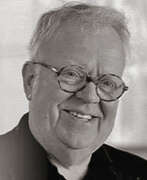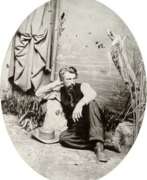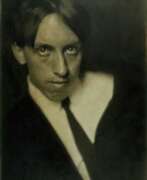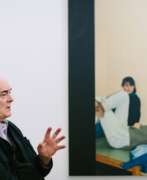Painters Black & white photo
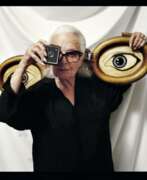

Lillian Bassman was an American photographer and artist.
A magazine art director and fashion photographer, she became famous in the 1940s and '50s for her high-contrast, dreamy portraits of sylph-like models. Bassman's unique graphic style of photography illustrates the feminine mystique and glamour, as well as the boldness of an artist who blurs the lines between fashion photography and fine art. Working as art director for Bazaar magazine in 1945, she helped launch the careers of many of the century's most famous photographers.
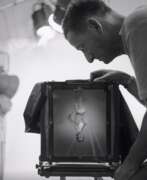

Erwin Blumenfeld was a German-born photographer and artist who is best known for his fashion photography and experimental work in the mid-20th century. He was began his career as an artist, working in painting, drawing, and collage.
In the 1930s, Blumenfeld fled Germany and settled in Paris, where he became a successful fashion photographer. He worked for Vogue and other high-profile magazines, creating iconic images of models and celebrities such as Marilyn Monroe, Elizabeth Taylor, and Grace Kelly.
Blumenfeld was also known for his experimental and avant-garde work, which often involved techniques such as photomontage, solarization, and multiple exposures. He saw photography as a means of artistic expression and used it to explore ideas about identity, beauty, and the nature of reality.
Blumenfeld's legacy as an artist and photographer continues to influence contemporary fashion and art. His innovative techniques and distinctive style continue to inspire new generations of artists, and his work is recognized as a significant contribution to the history of photography.
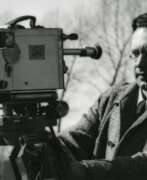

Alfred Ehrhardt was a universally talented German artist. He was an organist and choirmaster, then a music and art teacher in a remedial school, and finally an art teacher and painter, before becoming a photographer and director.
After spending the winter semester 1928-29 at the Bauhaus Dessau, where he was decisively influenced by Josef Albers, Wassily Kandinsky, Paul Klee and Oskar Schlemmer, he transferred the Bauhaus pre-course concept to his art lessons with children and young people, beginning in first grade and continuing through Abitur. Based on this experimental experience, in 1930 he was appointed to the Landeskunstschule Hamburg, where he created the first preliminary course in materials science outside the Bauhaus. After being dismissed by the National Socialists from the university in 1933 because of his modernist views of art, he turned to photography and film.
Alfred Ehrhardt is considered an outstanding representative of the new objective photography. After publishing more than 20 photobooks, he became one of the most successful photographers among the former Bauhaus artists. His "absolutely artistic films", which defy modernity and are inspired by the avant-garde of the 1920s, place him among the old masters of cultural and documentary cinema. Alfred Erhardt is considered "Germany's most important post-war creator of cultural films" and has received numerous national and international awards for his more than 50 films, including four Federal Film Prizes.
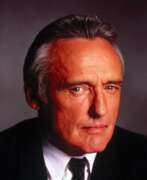

Dennis Lee Hopper was not only a prominent figure in the American film industry but also an accomplished photographer whose work captured the essence of a transformative era in the United States. Hopper's artistic journey spanned various mediums, with photography holding a special place in his array of talents. His photographic career, which began in earnest during the 1960s, offers a compelling glimpse into the cultural and social landscapes of the time.
Dennis Lee Hopper's photography is celebrated for its raw, candid portrayal of his surroundings, capturing moments that range from the intimate to the chaotic. His images provide a personal narrative of his life and times, reflecting his connections with key cultural and artistic figures of the era. His work is not just a collection of images but a visual diary, chronicling the vibrant and often tumultuous world he inhabited.
Notably, Dennis Lee Hopper's photographic portfolio offers an invaluable perspective on the American counterculture movement, showcasing his keen eye for composition and his ability to capture the spirit of the moment. His photographs, including portraits of famous contemporaries and snapshots of street scenes, resonate with authenticity and artistic integrity.
For collectors and enthusiasts in the realms of art and antiques, Dennis Lee Hopper's photographs represent a unique convergence of cinematic and photographic artistry. His works not only capture moments in time but also evoke the broader cultural shifts of his era. For those interested in exploring Hopper's photographic legacy, staying informed about exhibitions and auctions can provide opportunities to engage with his work more deeply and appreciate his contribution to the art of photography.
To stay updated on Dennis Lee Hopper's photographic works and related events, subscribing to updates from art galleries and auction houses is recommended. This subscription will provide timely information on new exhibitions, sales, and insights into Hopper's impact on the world of photography and art.
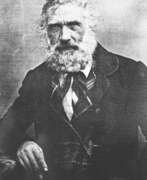

Johann Baptist Isenring was a Swiss landscape painter and printmaker, one of the first photographers in 19th-century Switzerland.
Johann studied painting and aquatint at the Munich Academy of Fine Arts, opened an art studio in St. Gallen in 1828 and soon began publishing his lithographic collection of picturesque views of Switzerland's most remarkable cities and towns.
In 1839, Isenring, fascinated by the discoveries of Niépce and Daguerre, bought equipment for "daguerreotype" and a year later organized an exhibition in his studio in Multtertor, which was probably the first photographic exhibition in the world. Isenring even gave up painting for a while and worked as a photographer for two years, settling in Munich. He made portraits, photographs of architecture, reproductions of paintings and developed a coloring method for his prints, which he patented in America.
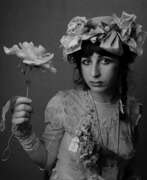

Colette Justine, better known as Colette Lumiere, is a Tunisian-born, American multimedia artist known for her pioneering work in performance art, street art, and her use of photography to create photographic tableau vivant. She is also known for her work exploring male and female gender roles, use of guises and personas, and for soft fabric environments, where she often appears as the central element.
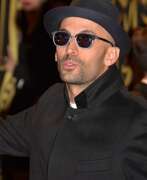

JR (French: Jean René) is the pseudonym of a French photographer and artist who does not give his full name. He lives and works in Paris and New York.
He describes himself as a "photograffeur" (photographer and graffiti artist in one word) and claims that the street is "the biggest gallery in the world". His work is flyposting large black and white images in public spaces. JR works at the intersection of photography, street art, filmmaking and social activism. Over the past two decades he has developed many public projects in cities around the world, from buildings in the slums of Paris to walls in the Middle East and Africa or favelas in Brazil.
JR places large-scale photographic images in public spaces. He started creating graffiti as a teenager on the streets and rooftops of Paris and on the subway. In 2007, he gained worldwide attention by placing huge photographs of Israelis and Palestinians face to face in eight Palestinian and Israeli cities on both sides of the separation barrier. In his works, the photographer always addresses current political and social issues in the world. For example, in 2019, JR worked with a group of inmates of a maximum security prison in California and created a large format piece with portraits of the inmates.
JR has traveled to many cities with his work, participating in exhibitions, he has collaborated with magazines and created films about his work. JR has also directed three feature-length documentaries, one of which, Women Are Heroes (2011) was nominated for an Oscar. At the 2017 Cannes Film Festival, he won the Golden Eye for Best Documentary.


Edward Ruscha, an American artist born in 1937, is a prominent figure associated with West Coast Pop art, celebrated for his innovative approach to blending visual and verbal language within his works. Ruscha's journey in the art world began after moving to Los Angeles in 1956, where his fascination with the urban landscape and commercial culture flourished. He attended Chouinard Art Institute, now known as CalArts, which laid the foundation for his artistic exploration.
Edward Ruscha's art is deeply influenced by the Hollywood film industry, with works like "Large Trademark with Eight Spotlights" echoing the commercial graphics and cinematic influence of his time. His "Word paintings" series, starting in the 1960s, showcases his unique approach to typography and language, setting monosyllabic words against solid backgrounds, a style that continued to evolve throughout his career.
During the 1970s, Edward Ruscha expanded his narrative, incorporating phrases into his works, further exploring the relationship between text and image. His work in the 1980s and beyond includes landscapes juxtaposed with text, creating intriguing visual narratives that challenge viewers to find connections between the words and the images.
Edward Ruscha's contributions to the art world are significant, with his works held in major collections and institutions. His career spans various mediums, including painting, printmaking, photography, and artist's books, showcasing his versatility and enduring influence on contemporary art.
For enthusiasts and collectors of modern art, Edward Ruscha's works offer a unique blend of visual artistry and linguistic play. His innovative approach to combining text and image has cemented his status as a pivotal figure in contemporary art. To stay updated on the latest exhibitions, sales, and insights related to Edward Ruscha's art, consider subscribing to updates from renowned art galleries and auction houses. This subscription will ensure you're informed about new opportunities to engage with and appreciate the distinct and influential art of Edward Ruscha.
